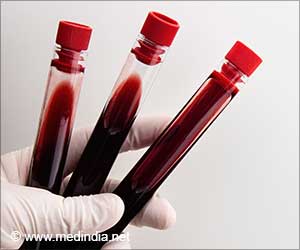Prions, which are a special class of proteins, are best known as causative factors for mad cow and other neurodegenerative diseases.
Prions, which are a special class of proteins, are best known as causative factors for mad cow and other neurodegenerative diseases.
Despite this negative reputation, according to a new report in the February 5th issue of the journal Cell, a Cell Press publication, a prion may also have important and very positive roles in brain function. The researchers suggest that a prion-like protein may participate in memory in higher eukaryotes, from sea slugs on up."The persistence of memory is a fundamental problem," said Kausik Si of Stowers Institute for Medical Research. "Experiences are temporal; they happen once, but somehow must lead to changes [in the brain] that are somewhat permanent."
Those changes must be mediated by molecules, including proteins. "The question is: how can you maintain a stable state with unstable biological molecules," Si said.
And now, research conducted by Si in collaboration with Nobel laureate Eric Kandel, suggests that prions may be one solution to that problem. Prions are distinguished by their ability to assume at least two distinct conformational states, one of which is dominant and self-perpetuating. That means that once a protein switches to its "prion state" it has the ability to convert other "non-prion" proteins to that state as well. Therefore, once engaged, the "prion state" is self-renewing and stable.
The findings suggest that memory traces may depend on a fairly unique mechanism involving a prion-like protein known as CPEB, Si said, adding to a growing body of evidence that proteins with the characteristics ascribed to disease-causing prions may have a broader role in biology.
Scientists have known for some time that plenty of prion-like proteins are found in relatively simple organisms such as yeast, some of which have known functions. A report by another group in Cell last year suggested that prions in yeast may serve as an important source of variation in nature (http://www.eurekalert.org/pub_releases/2009-04/cp-psa032709.php).
Advertisement
Scientists long ago traced that simple learned behavior to a specific set of sensory and motor neurons, which are stimulated by the nerve messenger serotonin. But Si wanted to better understand the underlying molecular details. In a survey of proteins made at the synapse when serotonin is applied, he turned up CPEB. Upon closer examination of the protein's sequence, Si had what he calls his "aha moment." He realized CPEB looked a lot like the prions others had found in yeast.
"These results are consistent with the idea that ApCPEB can act as a self-sustaining prion-like protein in the nervous system and thereby might allow the activity-dependent change in synaptic efficacy to persist for long periods of time," the researchers conclude. Si cautions, however, that they haven't yet proven that blocking CPEB's ability to self-perpetuate also blocks memory. For that, he says they would need to see whether a slug with a mutant version of the protein would learn but then quickly forget.
"Persistence of memory is a difficult problem," Si said. The new evidence offers "at least an idea" for how this may happen and he suspects the prion-like protein's apparent role in memory may turn out to be a more general phenomenon. His group is following up on their findings by investigating the role of the fly version of CPEB, and Si notes that humans do have a similar protein.
Source-Eurekalert
RAS














